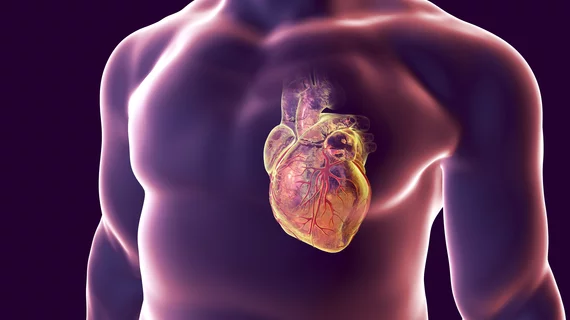PET imaging years after heart transplant surgery can save lives
Positron emission tomography imaging identifies red flags that may indicate blood flow problems in post-surgery heart transplant patients, scientists recently discovered.
Cardiac allograft vasculopathy is the most serious condition transplant patients face after surgery, researchers wrote in the Journal of Nuclear Medicine. But PET imaging can now be used to detect indicators of this condition—myocardial blood flow and myocardial reserve flow, said Robert J.H. Miller, MD, a clinical assistant professor at the University of Calgary in Canada.
“MBF and MFR have been shown to be useful for diagnosis and prognosis of CAV in a few single-center studies, however, there is no consensus on which marker—stress MBF or MFR—should be applied for these purposes,” Miller added in a statement published March 4. “In this study, we compared the utility of MBF and MFR, using previously derived thresholds, to provide the external validation required to guide broader clinical implementation.”
Patients who receive a new heart now have a median survival time of more than 13 years, the authors noted. But as average survival times continue to improve, so does the prevalence of heart diseases, such as cardiac allograft vasculopathy. This accelerated form of coronary artery disease is responsible for more than one-third of deaths in patients who survive at least five years post-transplant surgery.
To understand imaging’s role in these clinical scenarios, Miller et al. included 99 cardiac transplant patients, who received a 2Rb-PET myocardial perfusion exam over a five-year period, in their study. Researchers compared data from 26 individuals who died and another 73 who survived, and examined whether MBR or MFR could more accurately detect CAV.
Overall, both blood flow measurements accurately discovered patients with “significant” cardiac allograft vasculopathy. Miller also determined that stress MBF, corrected MFR and uncorrected MFR are diagnostic equivalents. The latter, however, came out ahead of the others for predicting all-cause mortality. Individuals with multiple abnormal measurements were deemed highest risk, the researchers noted.
“PET with routine measures of MBF and MFR has a clear role in patients following cardiac transplantation,” Miller wrote. “This study provides practical information for centers implementing PET for CAV surveillance and will help guide them in implementing these important measurements.”

